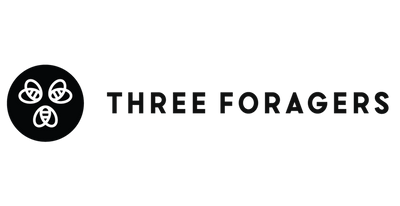

· By Three Foragers
Bee Species In Canada
What’s the first image that comes to mind when you think of a bee? Is it a small, yellow and black banded insect that drinks nectar and turns it into delicious raw honey? That’s a honeybee or Apis mellifera.

There are over 20,000 different species of bees, most of which are solitary and don’t make honey or live in hives. Don’t get us wrong, we love our honeybees! But we wanted to take a moment to share some notes about other lower-profile bee species you might not have known even exist. The next time you’re outside, keep an eye out for them!
Here’s our list of fascinating bee species found in Canada.
Sweat Bees
Halictidae, or sweat bees, are recognized by their metallic appearance. They can easily be mistaken for common houseflies. Sweat bees can be green, red, yellow, black or a combination of colours. They do have one thing in common, they look incredible.

“Sweat bee on coral vine flower” by Jim McCulloch is licensed under CC BY 2.0
Their common name sweat bee was given to them because they are often attracted to perspiration.
Don’t worry if one lands on you. These small bees are quite docile. They also have one of the least painful stings of any insect.
Parasitic Bees
Parasites come in many forms: birds, worms, ticks, microscopic organisms, and yes, even bees. Parasitic bees take advantage of the hard work of other bee species to raise their young.
There are many species of parasitic bees, and the most well known is the cuckoo bee.

The cuckoo bee infiltrates a beehive and lays its eggs inside cells meant to raise the host bees’ young. When a cuckoo bee hatches, it will eat the host larvae and the provisions inside the cell. How devious!
Some species of cuckoo bees will kill the host queen and replace it, forcing the rest of the colony to raise a family of its parasitic young.
Since parasitic bees benefit off of the work of other bees, they also don’t help with pollination or making honey. Their bodies reflect this as they lack any pollen grabbing hair or pollen baskets.
Carpenter Bees
Carpenter bees make their homes in soft pieces of wood, carving tunnels up to one foot deep to lay their eggs. These bees are mostly solitary, although some species live in small colonies. If your home has wood siding, you could very well be sharing your address with carpenter bees!

“Carpenter bees” by Helena Jacoba is licensed under CC by 2.0
Carpenter bees are often confused with bumblebees as they’re similar in size and appearance. The simplest way to tell them apart is by looking at their abdomens. A carpenter bee’s abdomen is shiny and devoid of hair, while a bumblebee’s belly is quite furry.
Male carpenter bees are aggressive and will protect their homes fiercely but these insects are all bark and no bite. Male carpenter bees don’t have stingers, but their buzzing and swooping is enough to send most people running!
Leafcutter Bees
The leafcutter bee is credited for saving the alfalfa seed industry. Alfalfa is a high protein feed source for livestock. When sources of alfalfa began to diminish in the 1940s, these bees helped pollinate the alfalfa plants back into health. It’s estimated that leafcutter bees are 15 times better than honeybees at pollinating alfalfa!

Leafcutter bees are solitary, and each nest houses just one adult bee. The bee works hard to find the best leaves to bring back to its home then wraps those leaves around its eggs, like leafy cocoons. Leafcutters bees can be recognized by their furry light coloured bellies.
Bumblebee
The humble bumblebee! These insects live in small colonies and are excellent pollinators. Their hives are often found underground, where they create honeypot structures (similar to honeycombs) to store honey and allow the queen to lay her eggs.

Bumblebees are easily recognizable by their fuzzy appearance and striking yellow and black colours. These bees do produce honey, but it’s not enough for us to harvest.
Honeybee
Our personal favourite, the honeybee! Honeybees are complex social insects that live in colonies that are thousands strong. They are most proficient raw honey producers, wax makers and pollinators and they’re the most recognizable bees on the planet!

Our honeybees collect nectar from alfalfa, cloves, and wildflowers to create delicious and subtly sweet raw honey. We also harvest some of their wax to create slow burning beeswax candles.
Visit our shop page where you can find sustainably sourced and environmentally friendly raw honey and other bee products!
With so many bee species in Canada, this list barely scratches the surface of what you can find in your own backyard. If you have any questions about the bees on our honey farm, any of the species listed here, or about our raw honey, leave a comment below or send us a message on Facebook!
This article was featured on Twinkl in their article Why Are Bees So Important?
